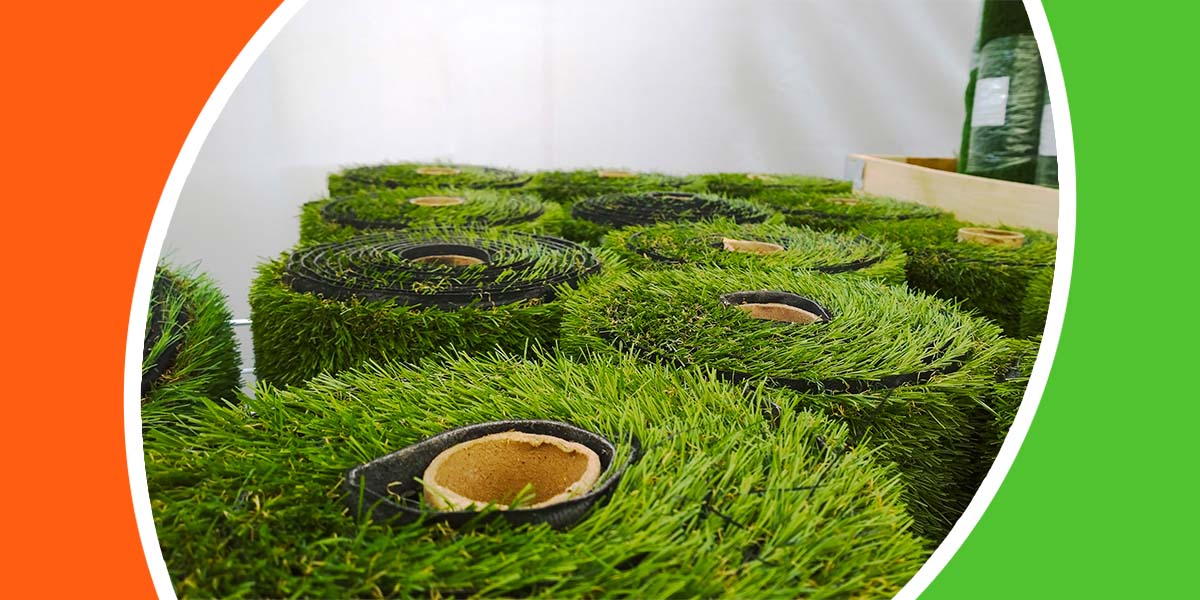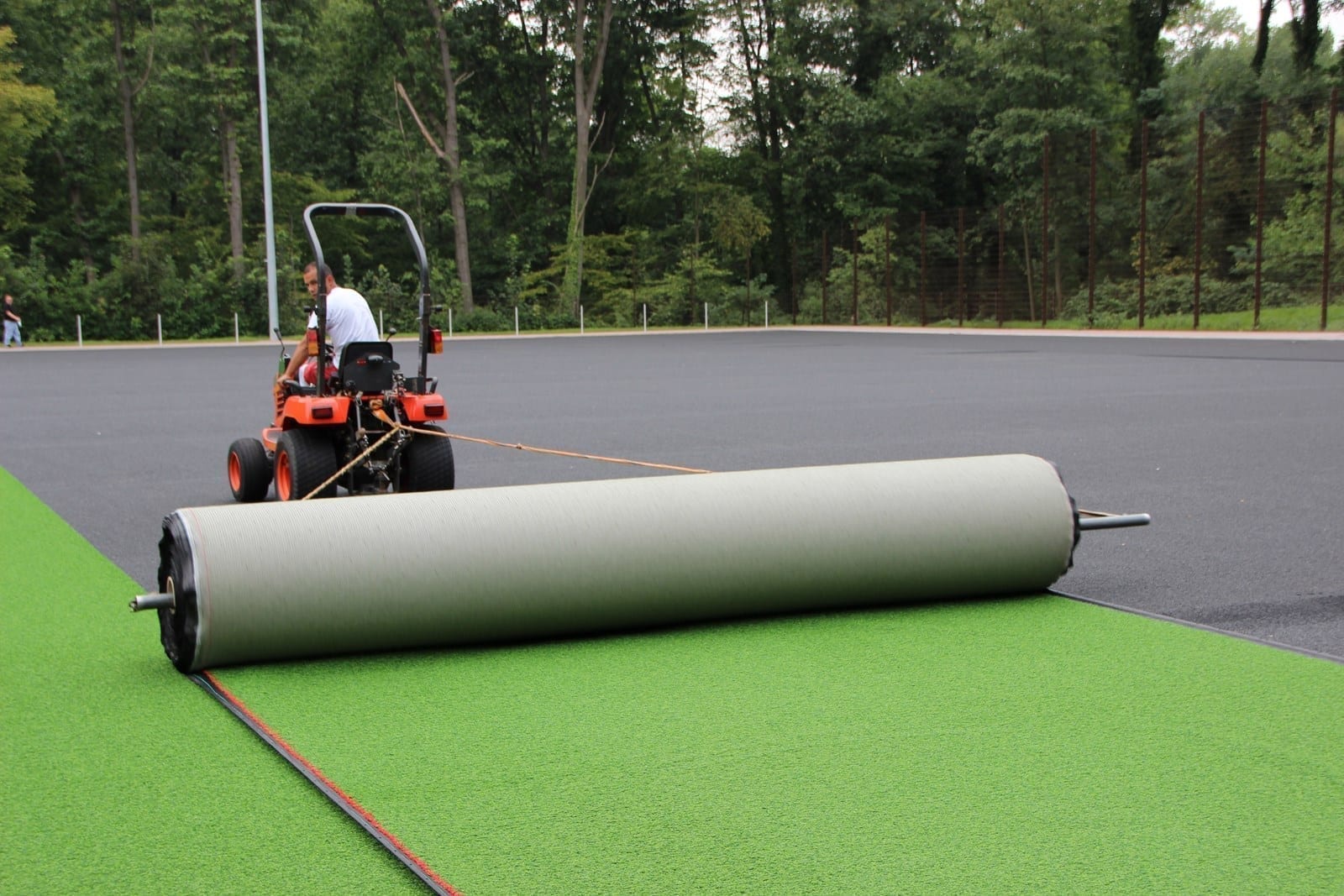See Why Homeowners Prefer Synthetic Grass for Sustainable Landscaping Practices
As property owners progressively focus on sustainability in landscape design, fabricated grass has actually become an engaging option to standard yard. Its capacity to save water, reduce maintenance efforts, and minimize environmental impact placements it as a sensible selection for those looking for environmentally friendly options. Additionally, the aesthetic appeal and flexibility of man-made grass accommodate diverse layout choices. However, the ramifications of this shift extend past simple benefit and looks, triggering a more detailed exam of exactly how these choices affect wider environmental results. What remains to be discovered is the full range of benefits that synthetic grass can provide to homeowners and the environment alike.
Water Conservation Conveniences
One of the most substantial benefits of man-made lawn is its function in water preservation. In contrast, synthetic lawn removes this need entirely, as it does not need irrigation.
In addition, the installment of fabricated lawn can contribute to a more sustainable landscape. Homeowners can significantly lower their water costs, permitting reallocation of resources to other ecological campaigns or family uses. Additionally, synthetic grass is created to withstand numerous climatic conditions without the demand for extra watering, making it a suitable option for regions facing water deficiency.
The environmental advantages prolong beyond instant water savings. By reducing water intake, synthetic lawn assists to mitigate the effects of climate modification, preserving crucial environments that are threatened by extreme water removal. As sustainable landscape design techniques acquire grip, synthetic lawn emerges as a liable choice for home owners looking for to develop eco-friendly exterior spaces.
Decreased Maintenance Efforts
Artificial grass dramatically minimizes upkeep efforts compared to standard lawn yards. With synthetic grass, house owners can remove the time-consuming tasks linked with natural landscaping, such as mowing, fertilizing, and weeding. This not just conserves beneficial time but likewise reduces physical labor, making lawn care easily accessible for people of every ages.
Traditional yards need regular trimming to keep a cosmetically pleasing height, whereas synthetic turf remains consistently lavish without the requirement for cutting. Additionally, home owners no longer need to use plant foods or pesticides, which are typically required to maintain natural yard healthy and balanced.
Moreover, synthetic grass is long lasting and resilient, needing minimal upkeep past occasional cleaning and rinsing to get rid of debris. This ease of upkeep allows house owners to appreciate their outdoor areas without the constant concern of maintenance, offering even more time for leisure and family members activities. Eventually, the reduced upkeep initiatives connected with fabricated turf make it an enticing option for those seeking a low-maintenance, aesthetically appealing landscape.

Environmental Effect Reduction
There is a growing recognition of the environmental benefits connected with synthetic grass, particularly in terms of water conservation and lowered chemical use. Conventional grass require considerable quantities of water, especially in drought-prone areas, leading to enhanced pressure on local water resources. On the other hand, synthetic grass removes the need for irrigation, drastically minimizing water intake and advertising sustainability.
Additionally, traditional yard upkeep often includes the application of fertilizers, herbicides, and pesticides, which can add read more to dirt and water pollution. Synthetic grass reduces this environmental danger by calling for minimal upkeep and virtually eliminating the demand for harmful chemicals. This not just boosts dirt health yet additionally shields neighborhood environments from harmful runoff.
Furthermore, the manufacturing of natural grass lawns commonly involves making use of fossil gas for mowing and landscaping devices, more adding to greenhouse gas emissions. By selecting synthetic grass, home owners can substantially reduce their carbon footprint related to yard care tasks.
Aesthetic Appeal and Versatility
In enhancement to its environmental advantages, fabricated turf supplies significant aesthetic charm and convenience for landscaping. Property owners can attain a lavish, environment-friendly appearance year-round, getting rid of the seasonal changes generally related to natural turf. This constant visual not just boosts the visual allure of a residential or commercial property however also contributes to a well-kept and refined appearance.
Moreover, synthetic grass is offered in a selection of shades, styles, and structures, enabling for modification to suit private preferences and style styles - Phoenix turf companies. Whether utilized in property gardens, business rooms, or recreational locations, it can perfectly integrate into varied landscaping designs, from contemporary minimalist to rich tropical settings
The versatility of artificial grass extends past plain appearance; it can be mounted in numerous places, consisting of roofs, patios, and even indoor areas, producing opportunities for one-of-a-kind landscaping services. In addition, it appropriates for a variety of tasks, from children's play locations to pet-friendly atmospheres, providing performance without endangering design.
Ultimately, the visual allure and versatility of synthetic lawn advice make it an appealing option for house owners seeking sustainable landscape design services that do not give up charm for ecological responsibility.

Long-Term Price Financial Savings
One of the most compelling advantages of man-made lawn is its possibility for long-term cost savings. Unlike natural lawn, which calls for routine upkeep-- consisting of mowing, watering, feeding, and parasite control-- artificial turf considerably minimizes these recurring expenditures.
In addition, synthetic grass has a lifespan of 15 to 25 years, depending on its quality and usage. This resilience reduces replacement expenses, making it a more economical choice in the future. In addition, the first financial investment in synthetic grass can commonly be recovered with the cost savings accrued over time.
While the in advance cost might seem greater contrasted to sod installation, the collective cost savings from decreased maintenance and water use typically outweigh these first expenditures. Ultimately, the fostering of synthetic grass not just promotes a lasting landscaping solution however also offers home owners an economically savvy alternative that aligns with lasting budgeting goals.
Conclusion
Synthetic grass becomes a compelling choice for lasting landscape design, supplying significant advantages in water conservation, decreased upkeep efforts, and diminished ecological impact. Its visual appeal and convenience improve the visual landscape while straightening with modern sustainability goals. Long-term expense financial savings add to its beauty for house owners. As areas increasingly prioritize eco-friendly methods, the fostering of artificial turf represents a modern action towards attaining resilient and sustainable landscapes.
In addition, fabricated grass is made to hold up against numerous weather problems without the requirement for additional watering, making it an optimal choice for areas encountering water shortage. (Phoenix turf companies)

Artificial check this grass emerges as a compelling choice for sustainable landscape design, providing significant benefits in water conservation, lowered maintenance initiatives, and decreased ecological influence.